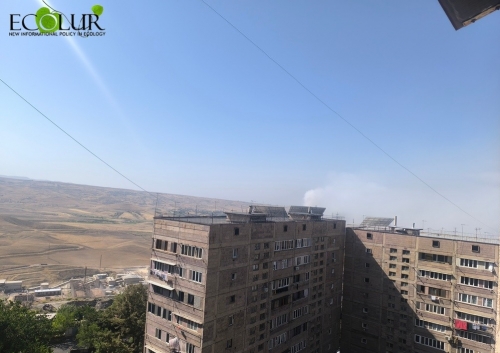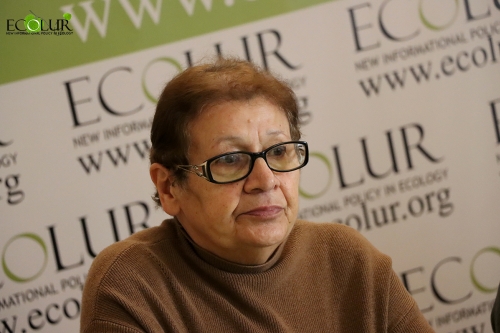

The fire that broke out on August 8 at Yerevan’s Nubarashen landfill site has been extinguished, but it continues to emit smoke. According to the official statement from Yerevan Municipality, in cooperation with the Ministry of Internal Affairs’ Rescue Service, anti-fire and preventive measures are ongoing.
In a video released by the Municipality on August 10, Yerevan Mayor’s Advisor Kamo Areyan stated: “On the late evening of August 8, a large-scale fire broke out in the waste disposal area adjacent to Nubarashen Highway, covering the entire southern section. Necessary measures were taken, and by the morning of August 9 the fire was extinguished, but the entire area continued to smoke. The only solution, coordinated with the Rescue Service, is to cover the site with a layer of soil, which can smother the smoke. Around 30 pieces of equipment, dump trucks and loaders, have been mobilized.”
On August 11, the Ministry of Environment presented information on Yerevan’s atmospheric air quality for August 1–10, including data related to the Nubarashen landfill fire and atmospheric emissions.
According to five stationary monitoring stations, in the first ten days of August 2025 the concentration of dust in Yerevan’s air exceeded the maximum permissible concentration (MPC) by 1.01–2.1 times.
The highest exceedances were observed in Kentron District from August 7–10. On August 8, all stations recorded the highest dust concentrations, exceeding MPC by 1.1–2.1 times, with the highest level at the Lusavorich–Agatangeghos intersection. Passive samplers in the Nubarashen Administrative District (near the landfill site) showed no exceedances for nitrogen dioxide between August 3–10. Sulfur dioxide exceeded MPC only once, by 1.2 times.


Roza Julhakyan, expert at “EcoLur” Information NGO, explained: “Methane gas forms deep in the landfill and escapes to the surface through fissures. If there is a source of ignition — a lit match or sunlight reflected through glass — the surface can catch fire. During open burning, not only methane burns, but also other materials in the area such as organic compounds and plastics. These release hazardous substances into the air, such as dioxins, which are carcinogens that spread through the air, enter the human respiratory system, and can harm human health.”
Julhakyan stressed that the issue must be addressed systematically. Under the UN Framework Convention on Climate Change, there is a commitment to gradually reduce the disposal of organic matter at landfills, as it is the main source of methane.
In cooperation with the Ministry of Environment, the American University of Armenia’s Acopian Center for the Environment has developed a draft “Law on Extended Producer Responsibility,” now published on the Unified Website for Draft Legal Acts. The bill aims to introduce the extended producer responsibility (EPR) mechanism in Armenia, requiring producers and importers of certain products to establish safe and effective waste management systems.
“The draft stipulates that certain types of waste must be managed by the importer or producer. Companies should be created to oversee the entire journey of these wastes — from production to recycling,” Julhakyan noted.
According to Julhakyan, the most realistic short-term solution is to cover the landfill with a thick layer of soil, as is done with tailings dams, followed by planting vegetation to prevent soil erosion. “This will reduce atmospheric air pollution, but the buried waste can still pollute groundwater. For new landfills, geomembrane technology can be applied from the outset, adding an insulating layer beneath the soil. But in the current situation, urgent measures are needed,” she added.

August 12, 2025 at 15:44
